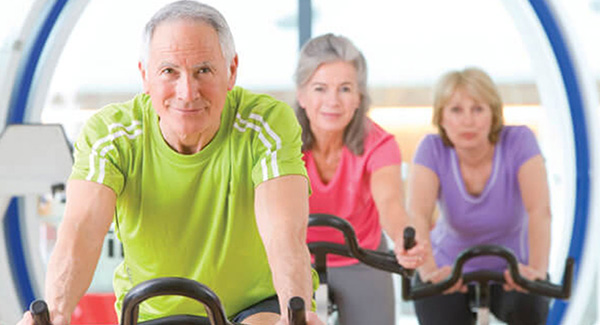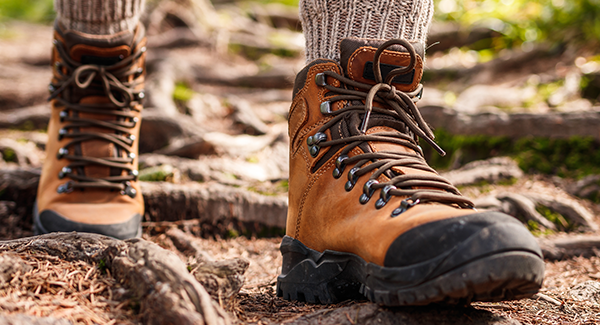11 Common Exercise Hurdles to Overcome
Take a look at these tips to help start and maintain an exercise program to manage arthritis symptoms.
1. 11 Common Exercise Hurdles to Overcome
Exercise plays an important role in managing arthritis symptoms. But it may be hard to start or maintain an exercise program. Our experts explain how to overcome 11 common hurdles – from pain or exhaustion to boredom. Make sure to talk to your doctor before getting started.
2. “I have no time to work out.”
With your fast-paced life, you hardly have time for a trip to the gym. But research shows that you don’t need a lot of time. A study published in Arthritis Research and Therapy showed that women who exercised 75 minutes a week – that’s about 11 minutes a day – were less likely to experience stiff, achy joints than their sedentary counterparts. “Do a few laps around the shopping center while you’re running errands,” suggests Tony Wanich, MD, a sports medicine specialist and orthopedic surgeon in New York City.
3. “I’m in too much pain.”
When you’re already hurting, it’s difficult to find the motivation to move. But mild activity can help ease the ache, says Megan Murphy, a physical therapist in Denver. Choose a low-impact activity such as water exercise, “since the buoyancy of the water takes pressure off of painful joints,” says Dr. Wanich. But before you dive in, start with a warm-up to prep the muscles.
4. “It’s hard to stick to a program.”
In a study published in the Journal of Aging and Physical Activity, people with knee osteoarthritis who paired up with a partner stuck to a workout plan for longer than those who did it alone. “Exercising with another person keeps you accountable, so you’re less likely to skip a session,” says Mary Edwards, fitness director at Cooper Fitness Center in Dallas.
5. “I’m too exhausted.”
Although it sounds contradictory, exercise can put more fuel in your tank. A study published in the journal Psychotherapy and Psychosomatics showed that inactive adults who started riding a stationary bike for 25 minutes three days a week experienced a 20% jump in their energy level after about two months. “Physical activity increases circulation throughout the body,” explains Lillie Rosenthal, DO, a board-certified physical medicine and rehabilitation specialist in New York City.
6. “I’m not trying to slim down.”
There’s more to exercise than simply losing weight. “Exercise strengthens the muscles and ligaments around the joint, so there’s less pressure,” says Lauren Smith, a physical therapist with the Hospital for Special Surgery in New York City. You’ll experience better range of motion and less achiness, making it easier to climb stairs, get dressed and take out the trash. A study published in the Journal of Rheumatology found that people with knee osteoarthritis who participated in strength training program for four months experienced a 43% decrease in pain.
7. “I’m too self-conscious.”
Feeling embarrassed or intimidated is common barrier to exercise according to a survey published in the Journal of Nutrition Behavior and Education. “If you feel out-of-place in your current gym, consider switching to another one,” says Edwards. If you’re making a switch, she suggests touring health clubs at the time you plan to work out and talk to staff and clientele so you get to know the environment.
8. “Joining a gym costs too much money.”
A survey from the International Health, Racquet & Sportsclub Association showed that 59% of non-gym members say that fees are the main reason they haven’t signed up. But experts agree that you don’t have to belong to a gym to get a good workout. “Walking is free,” says Edwards, “and creating a home gym can cost less than $100.”
9. “I’m not seeing results.”
It’s natural for the progress of an exercise program to gradually slow with time. “Your muscles eventually adjust to this new level of activity,” says Dr. Rosenthal. A study published in the Journal of Applied Physiology found that women who did an hour of intervals on a stationary bike – four minutes of sprints, followed by two minutes of recovery – burned 36% more fat than those who maintained a steady pace. To jumpstart your walk routine alternate a few minutes of brisk pace with your normal moderate stride.
10. “I don’t know where to begin!”
If it’s been a while since you last laced up your sneakers, you may need a refresher course from a certified personal trainer. “Learning the proper form and technique is important for preventing injury,” says Rick Schultz, MD, the chief of surgery in orthopedics at Scott & White Healthcare in Round Rock, Texas. Choose a find fitness professional who has experience working with people who have arthritis.
11. “I’ll start tomorrow.”
You woke up with every intention of hitting the gym. But after your day got busy, you decided to put it off until tomorrow. Sound familiar? To snap out of the procrastination cycle, make a plan. “At the start of each week, schedule your workouts into your calendar with reminders,” suggests Dr. Rosenthal. “Make walking or exercise dates with friends, so you won’t back out.”
12. “It’s hard to stay motivated.”
According to a study published in the Archives of Internal Medicine, employees spent less time on the couch and more time exercising when they were offered cash incentives for healthy behaviors. So give yourself healthy rewards, like new music or clothes for your workouts to help inspire you to get and keep moving.
13. Ready to get started?
If you’re having trouble getting started, check out our Walk With Ease program. Also, find DVDs at the Arthritis Foundation store, and find tips and modifications for numerous activities with Your Exercise Solution tool.
Stay in the Know. Live in the Yes.
Get involved with the arthritis community. Tell us a little about yourself and, based on your interests, you’ll receive emails packed with the latest information and resources to live your best life and connect with others.


